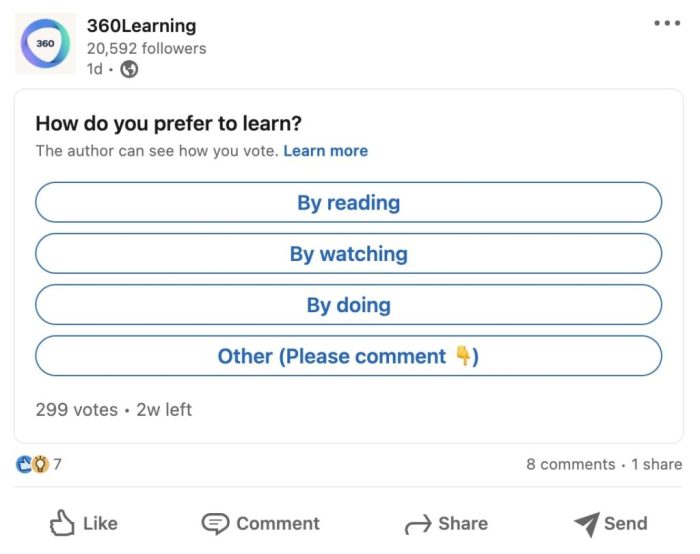Using Social Media Polls for Engagement sets the stage for an exciting journey into the world of interactive content creation. From crafting compelling questions to analyzing insightful results, this guide will take you through the ins and outs of leveraging polls on social media platforms.
Introduction to Social Media Polls
Social media polls are interactive features that allow users to create and participate in polls on various social media platforms. These polls typically consist of a question with multiple answer options, where followers can vote and see real-time results.
Social media polls are used for engagement purposes to increase interaction and foster a sense of community among followers. They provide a fun and easy way for users to express their opinions, preferences, and interests on different topics.
Popular Social Media Platforms for Polls
- Instagram: Instagram Stories feature allows users to create interactive polls with customizable options.
- Twitter: Twitter polls enable users to create simple polls with up to four answer choices.
- Facebook: Facebook polls can be created within groups, pages, or event invites to gather feedback from followers.
Benefits of Using Social Media Polls
- Increased Engagement: Polls encourage followers to actively participate and engage with your content, leading to higher interaction rates.
- Real-Time Feedback: Polls provide instant feedback on various topics, products, or services, helping you make informed decisions based on audience preferences.
- Enhanced Reach: Polls can attract new followers and increase visibility as users share their poll responses with their network, expanding your reach.
Types of Social Media Polls
When it comes to engaging your audience through social media polls, there are various types to choose from. Each type has its own unique way of capturing the attention of your followers and sparking interaction.
Multiple-Choice Polls
Multiple-choice polls are among the most popular types of polls used on social media platforms. They allow users to select from a list of predetermined options, making it easy for them to participate and provide their input.
- Provide a variety of choices to cater to different preferences
- Create engaging and thought-provoking questions
- Use visuals to make the poll more appealing
Yes/No Polls
Yes/no polls are straightforward and can quickly capture the attention of your audience. They require a simple response, making it easy for users to participate and share their opinion.
- Keep questions concise and clear
- Encourage users to elaborate on their choice in the comments
- Use emojis or gifs to make the poll more interactive
Ranking Polls
Ranking polls allow users to prioritize their preferences by ordering the options provided. This type of poll can be engaging as it requires users to think critically about their choices.
- Include a mix of popular and unique options for ranking
- Encourage users to explain their rankings in the comments
- Share the results and discuss the top choices with your audience
Tips on Choosing the Right Type of Poll
When deciding on the type of poll to use, consider your content and audience preferences. Take into account the nature of the topic you are discussing and the level of engagement you want to achieve.
- Understand your audience demographics and interests
- Align the type of poll with the tone of your brand or social media account
- Experiment with different types of polls to see which resonates best with your audience
Designing Engaging Poll Questions

Crafting compelling poll questions is crucial to attracting participation and engaging your audience. When creating poll questions, it’s essential to consider the following guidelines to ensure they are clear, concise, and interesting for your followers.
Guidelines for Creating Poll Questions
When designing poll questions, keep the following tips in mind:
- Keep it simple: Ask straightforward questions that are easy to understand.
- Avoid bias: Ensure your questions are neutral and don’t lead participants to a specific answer.
- Be specific: Clearly define the options for respondents to choose from.
- Make it relevant: Ask questions that are timely and related to your audience’s interests.
- Use language that resonates: Tailor your questions to match the tone and style of your brand or platform.
The Role of Visuals and Multimedia
Adding visuals and multimedia elements to your poll questions can significantly enhance their appeal and engagement. Here’s how:
- Visual appeal: Incorporating images, GIFs, or videos can make your poll questions more eye-catching and enticing for users to interact with.
- Contextual support: Visuals can provide additional context or information to help respondents make informed choices.
- Emotional connection: Multimedia elements can evoke emotions and create a more engaging experience for participants.
- Increased shareability: Poll questions with visuals are more likely to be shared across social media platforms, increasing their reach and engagement.
Increasing Participation and Interaction: Using Social Media Polls For Engagement

To boost engagement in social media polls, it’s crucial to implement strategies that encourage more followers to participate actively. This not only increases interaction but also helps in building a sense of community among your audience.
Encouraging Participation
- Utilize catchy and relevant hashtags to increase the visibility of your polls.
- Promote your polls across different social media platforms to reach a wider audience.
- Ask followers to tag their friends in the comments section to involve more people.
Boosting Engagement through Incentives
- Offer exclusive discounts or giveaways to participants to motivate them to take part in the polls.
- Provide early access to new products or content for those who engage actively in the polls.
- Host contests with prizes for those who share their poll responses on their own social media profiles.
Interacting with Followers based on Poll Results
- Share the poll results with your audience and thank them for their participation.
- Ask follow-up questions related to the poll results to keep the conversation going.
- Show appreciation for feedback received and implement changes based on the poll responses to show followers that their opinions matter.
Analyzing Poll Results
When it comes to using social media polls for engagement, analyzing the poll results is crucial for gaining insights into audience preferences and making informed decisions for content creation.
Significance of Analyzing Poll Results
Understanding poll data allows you to identify trends, preferences, and patterns among your audience. By analyzing the results, you can tailor your content to better resonate with your followers, ultimately increasing engagement and interaction.
Tips for Interpreting Poll Data
- Look for patterns and trends in the responses to identify common preferences among your audience.
- Pay attention to the comments and feedback provided alongside the poll responses for additional insights.
- Compare the results of different polls to see if there are any consistent themes or interests among your followers.
- Use tools and software to help analyze the data more effectively and identify correlations between different variables.
Leveraging Poll Data for Marketing Strategies
Businesses can use poll data to tailor their marketing strategies effectively by:
- Creating targeted content based on the preferences and interests revealed through poll results.
- Adjusting product offerings or services to better meet the needs and desires of the target audience.
- Engaging with followers by responding to their feedback and incorporating their suggestions into future marketing campaigns.
- Monitoring the performance of different marketing strategies based on the insights gained from poll data and adjusting as needed.
Case Studies
In the world of social media, successful poll campaigns can make a huge impact on engagement and brand awareness. Let’s take a look at some case studies of brands and influencers who have effectively used social media polls to drive interaction and generate buzz.
Nike’s Air Jordan Poll Campaign
Nike, a renowned sportswear brand, launched a poll campaign on Twitter asking fans to vote for their favorite Air Jordan sneaker design. By involving their audience in the decision-making process, Nike not only increased engagement but also gained valuable insights into consumer preferences. The campaign led to a significant boost in brand loyalty and generated a buzz around the new product launch.
Kylie Jenner’s Makeup Polls on Instagram
Beauty influencer Kylie Jenner is known for engaging her followers through interactive content, including polls on Instagram. By asking her audience to vote on makeup looks or product preferences, Kylie not only creates a sense of community but also gathers data on customer preferences. This approach has helped Kylie tailor her product offerings to meet the demands of her audience, leading to increased sales and brand loyalty.
Starbucks’ Seasonal Drink Polls
Starbucks, a popular coffee chain, often runs polls on social media to gauge customer interest in new seasonal drink offerings. By allowing followers to vote on their favorite flavors or ingredients, Starbucks creates excitement around upcoming launches and encourages customers to visit their stores to try the winning drink. This strategy not only drives engagement but also helps Starbucks gather valuable feedback for future product development.
Key Takeaways, Using Social Media Polls for Engagement
– Involving your audience in decision-making processes can lead to increased engagement and brand loyalty.
– Gathering data through polls can provide valuable insights into customer preferences and help tailor product offerings.
– Creating interactive content on social media can generate buzz and excitement around new products or promotions.

